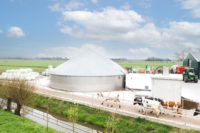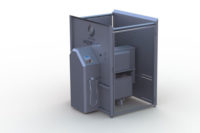Food industry observers expected today thatKraft Foods Inc. might further discuss its reported plans to halve its base of an estimated 70,000 suppliers. As Reuters reported last week, the cost-cutting move affects everything from ingredients to packaging materials and encompass both manufacturing and logistics.
Kraft officials cite several reasons for the move. First, this Northfield, Ill.-based giant -- the parent to DiGiorno frozen pizza and Oscar Mayer meats -- wants to save more than $300 million a year by 2011. Second, the time is simply right for such a rationalization. That is, Kraft needs to streamline and simplify a procurement program that literally has grown with past acquisitions.
"This is probably the first truly holistic view we've taken," Julia Brown, senior vice president of procurement at Kraft, said in a Reuters interview.
"We're essentially taking a white sheet of paper and saying 'what is the right number of suppliers to support this particular category, who are they, what is the capability we need for now and in the future, and does the current supplier base have that.'"
Reuters said Kraft will further discuss the plan today in a presentation to analysts. The move comes after Kraft spent several years cutting costs via plant closings, divesting brands that did not fit its core categories and putting more money into advertising and product development to boost sales.
All told, Kraft's cost of goods sold was about $28 billion in 2008. But purchasing is the largest area where the company feels it can cut costs, spokesman Michael Mitchell said.
Kraft informed its suppliers in March that it was conducting the purchasing review. That review puts existing suppliers not only in competition with each other for Kraft's business, but also with potential new suppliers.
"We're inviting a lot of new suppliers to participate in this process," Brown said.
Overall, Kraft had cost-cutting programs in place that represented less than 3 percent of its cost of goods in 2008. By 2011, the company is pushing for that figure to be more than 4 percent, representing a difference of more than $300 million, Mitchell said.
In some cases it makes sense for an individual Kraft brand to buy its own items, to meet the expectations of the shoppers that buy a product, Brown said. But Kraft is also trying to determine areas where it could save money by purchasing items -- such as packaging materials -- for the entire company.
Reuters reported that Kraft has more than 40,000 different specifications for its supplies throughout the world.
"So we're looking at where does it make sense to be more standardized," Brown said.
Some suppliers that win Kraft's business will benefit from having longer contracts with the food company, while Kraft hopes the stronger relationships will give it greater access to their new products first and exclusively, a key advantage for competing in the food industry.
"Our goal is to become the customer of choice to our strategic suppliers," Brown said.
Get our new eMagazine delivered to your inbox every month.
Stay in the know on the latest food and beverage manufacturing markets.
SUBSCRIBE TODAYCopyright ©2024. All Rights Reserved BNP Media.
Design, CMS, Hosting & Web Development :: ePublishing

